SciArt profile: B. Duygu Özpolat
Posted by the Node, on 18 February 2025
In this SciArt profile, we find out more about B. Duygu Özpolat, an assistant professor whose research focuses on germ cell regeneration in segmented worms. Duygu enjoys creating pottery pieces of worms, bugs, and other “creepy” animals to show people the beauty and wonders of these organisms.
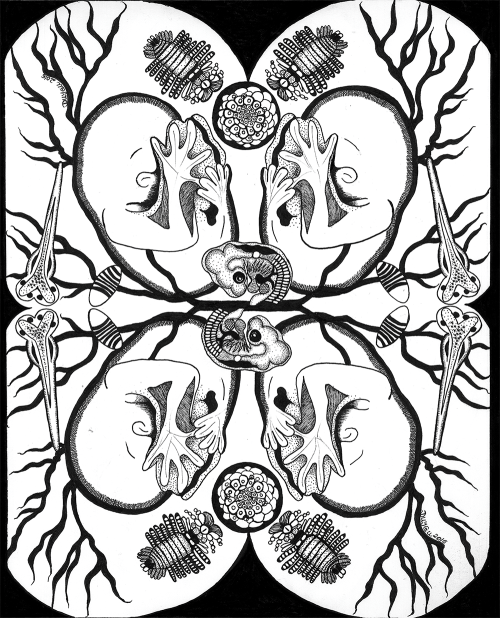
Can you tell us about your background and what you work on now?
I am an assistant professor of biology and a visual artist currently living in Saint Louis, Missouri. I earned my Ph.D. in Cell and Molecular Biology from Tulane University in New Orleans, and my B.Sc. in Biology from Middle East Technical University in Ankara, Türkiye. I primarily study stem cells and regeneration, with a specific focus on germ cell regeneration, using segmented worms as a model. Here is a great article about my lab’s work.
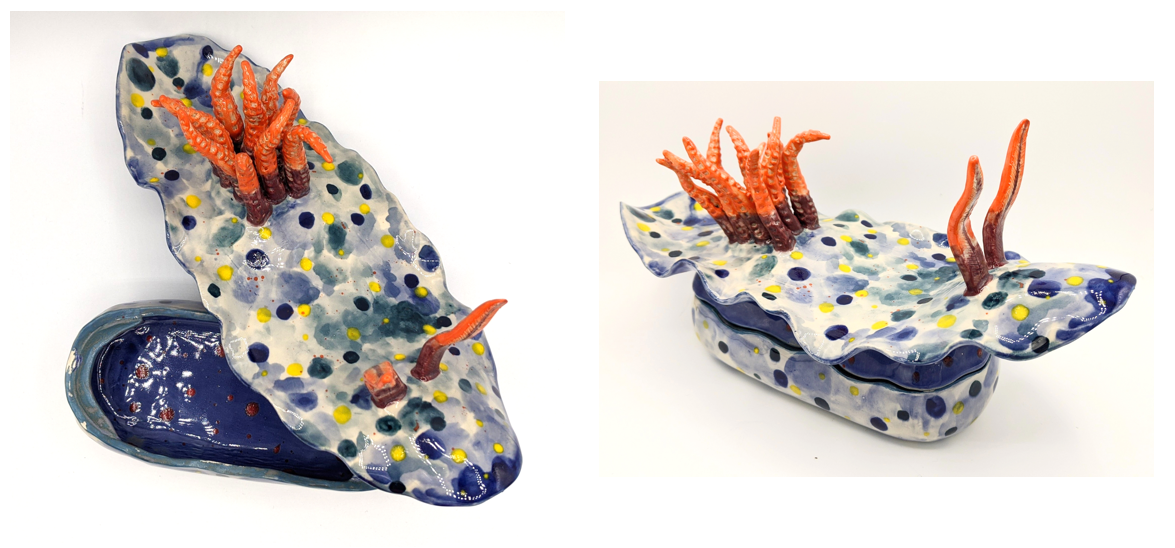
Were you always going to be a scientist?
Kind of! I grew up with a mother who was an arts teacher. So, art was in my life from early ages. But then when I started primary school and started getting exposure to science topics, and simple home experiments, similar to making a battery from potatoes or baking powder and vinegar volcano experiments, I fell in love with science. My mom loves telling the story that one day while in primary school, I asked her whether I could become a tailor and a scientist when I grow up, to which she replied, “Of course honey!”. I think of this as one of the defining moments in my life because I was so lucky to have a mother who believed I could be whatever I wanted to be. I got no discouraging, gender-stereotyped messages from her.
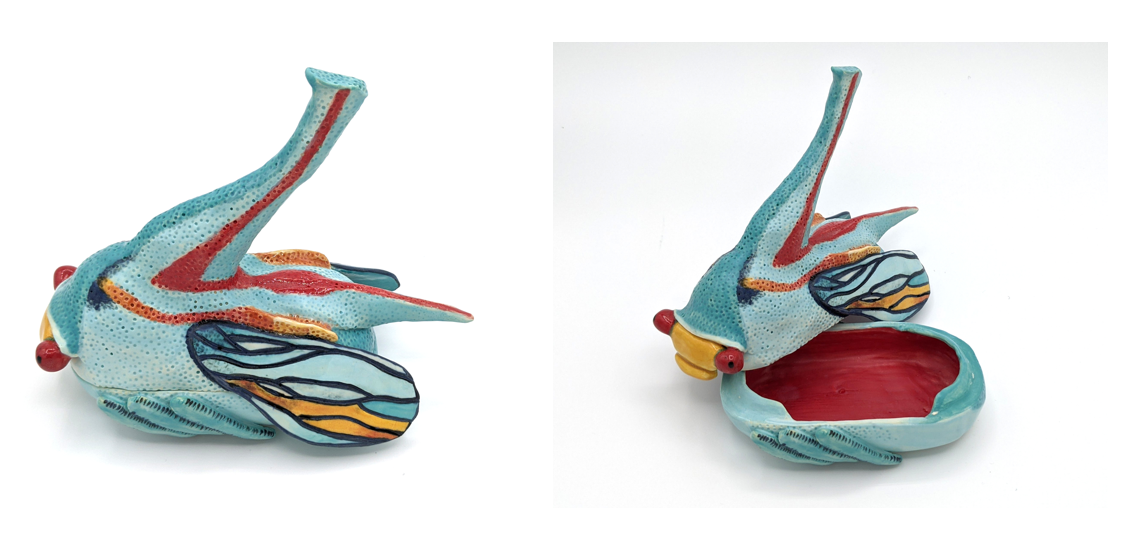
And what about art – have you always enjoyed it?
There are many layers to this for me: Art, just like science, is the exploration of the unknown, which is one of the main reasons I am also drawn to art. But unlike science, art for me has less anxiety and planning around it. I like mindlessly losing myself in a piece of artwork, and not worrying about what people will think about it, whether anyone will like it. I enjoy the process of creating, the tactile aspect of it, and how making art keeps me present in the moment.

What or who are your most important artistic influences?
Like any biologist, I have been absolutely charmed by the German zoologist Ernst Haeckel’s illustrations (but have been disappointed to find out about his racist ideology). When I visited Harvard Museum of Natural History and saw Leopold and Rudolf Blaschka’s glass flowers I was blown away! Some contemporary Scientist-Artists who inspire me are Steph Nowotarski and Bob Goldstein. Bob does screen printing, him and I collaborated on a poster project for a seminar series, which was great fun. It is encouraging for me to see full-time scientists like Steph and Bob make such great art inspired by science.
Meanwhile, my work could not exist without people who go out and document these amazing creatures. My husband Ryan Null is the person who taught me so much about insects and other arthropods. It is amazing to have somebody so knowledgeable around you. He is able to find all kinds of insects just in our backyard and photograph them, and sometimes I help him with his photography. We took the candy-striped leafhopper photo together while living on Cape Cod and later I made the ceramics piece inspired by it.
I also follow quite a few macro and wildlife photographers’ works such as Markus Kam and Alexander Semenov (who is also a scientist).
Finally, I am a huge fan of contemporary art and related museums. When I lived in Paris, I visited Palais de Tokyo often and was introduced to Marguerite Humeau’s work there for the first time. The exhibition at the time included her work called FOXP2, which is a gene associated with language ability in vertebrates. Another contemporary art museum experience that I cannot forget is Mark Dion’s “Misadventures of a 21st-Century Naturalist” exhibition at ICA in Boston, which left me absolutely speechless. I would love to be able to make artwork at the scale Mark Dion works one day.
A few other artists including pottery, glass, and embroidery artists I want to mention are Sarah Caruso, Mary Rhein, Lisa Stevens, Luke Jerram, and Meredith Woolnough. All these artists make beautiful, meticulous work inspired by nature.
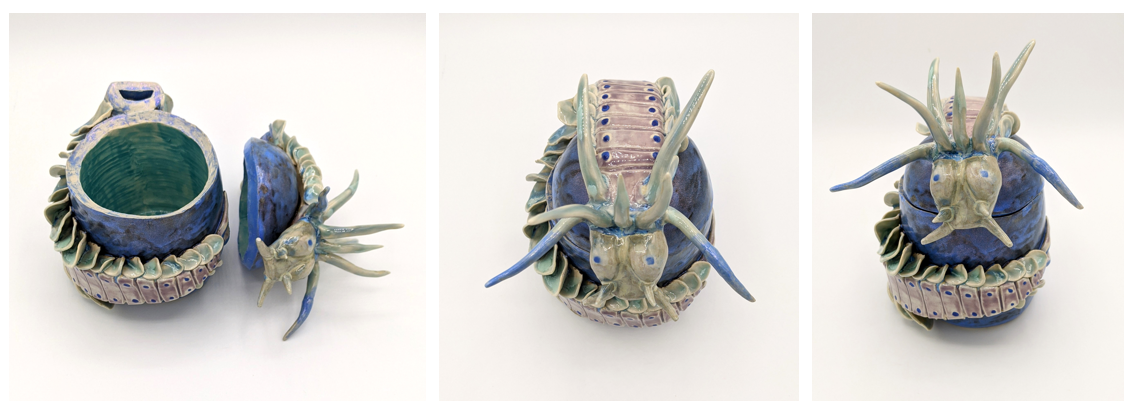
How do you make your art?
Since moving to Saint Louis, I have been mostly making my pottery in my basement, and I take the pieces to be fired in a kiln at a pottery shop. I would like to go back to taking classes at a pottery studio at some point because I like the communal aspects of studios, and having made a commitment to taking a class makes it harder to procrastinate on my arts projects.
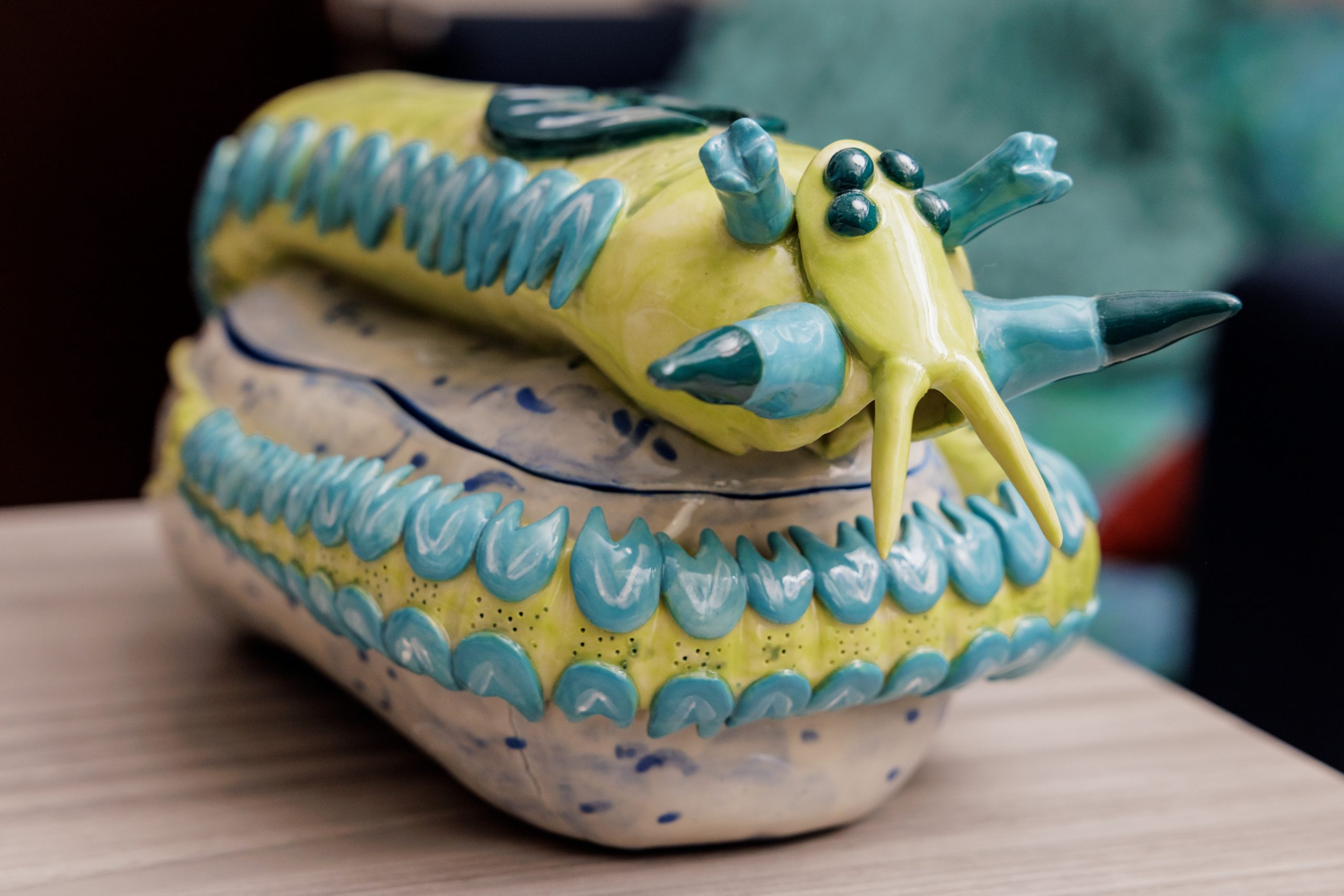
Does your science influence your art at all, or are they separate worlds?
Yes, my science influences my art very much. I am on a mission to get worms, bugs, and other “creepy” animals more appreciated! It is very important to me to invite people to leave their preconceived notions about these animals aside and open their minds to the beauty and wonders of them. We see only a handful of animals (usually vertebrates) celebrated in popular culture when there are literally millions of amazing species out there. I have given SciArt talks at conferences, and would like to use my pieces for science outreach projects in the future.
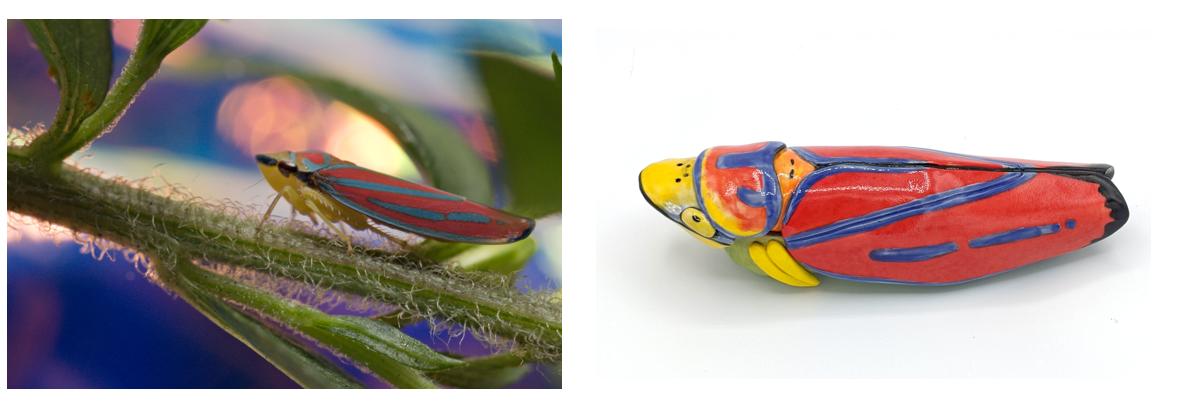
What are you thinking of working on next?
I am very excited about building my own plaster molds to use in slip casting. This is a ceramics technique where clay in liquid form is used to cast a piece using a mold. I trained with Mary Rhein (an amazing local Saint Louis area artist). The process of making molds is very technical, you definitely need a “protocol” for this practice which makes me feel like I am at the lab bench. I am currently working on making molds for some of the insect figures such as the membracids and candy-striped leafhopper I made in the past, so I can focus on painting and decorating pieces.
I also love my most recent collaboration with my husband Ryan Null, who is also a scientist. Ryan loves leeches (so do I!). Leeches have been an amazing developmental biology model, and we finally got some from David Weisblat’s lab. Ryan came up with the design of a leech ice cream dish, with small baby leeches as the ice cream spoons. I want to make a few more variations of this piece.


Find out more about Duygu:
www.ozpolatlab.org – mostly science and my lab’s news, academic self-help resources, and some science-art
https://www.instagram.com/biyolokum/ – mostly art
https://bsky.app/profile/biyolokum.bsky.social – mostly science


 (3 votes)
(3 votes)